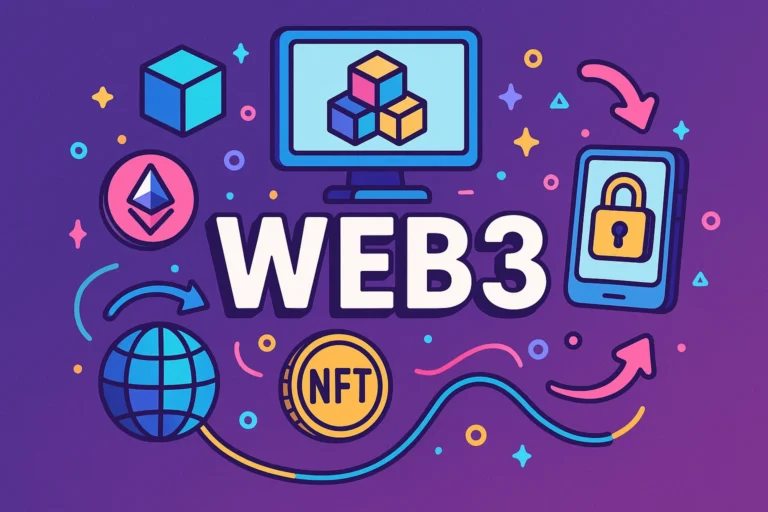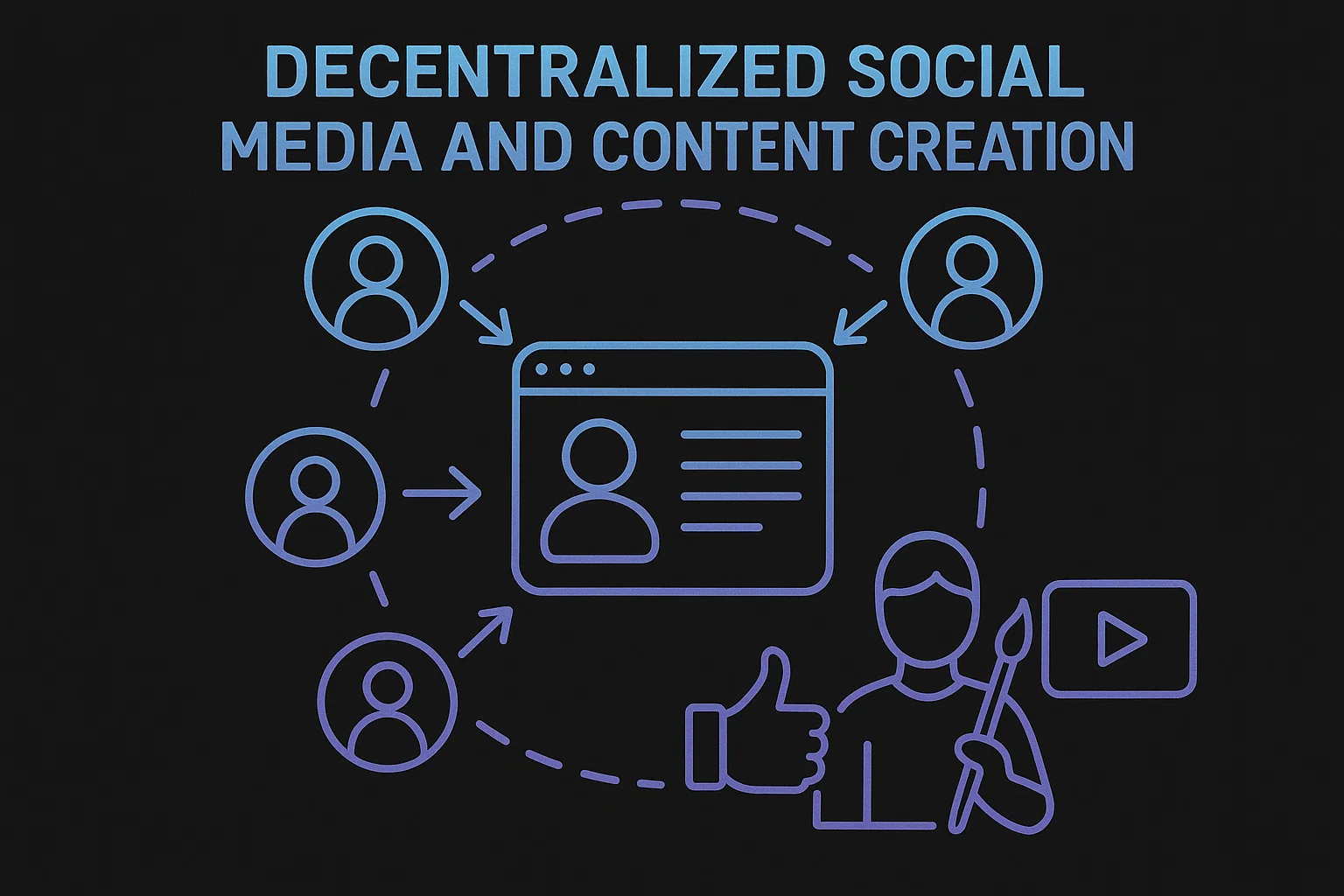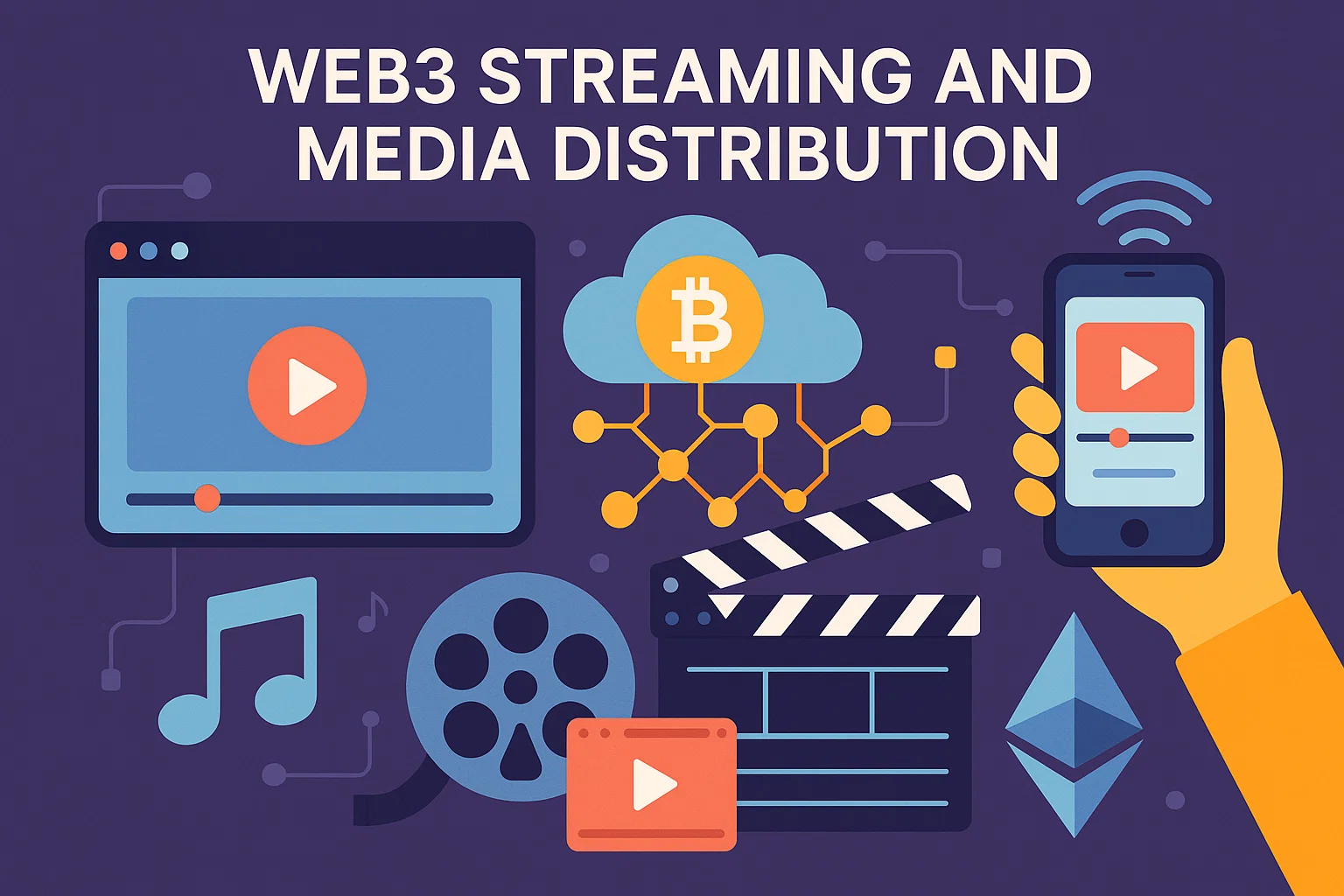The digital landscape is experiencing a seismic shift that extends far beyond cryptocurrency trading and decentralized finance. While most discussions around Web3 technology focus heavily on financial applications, there’s a revolutionary transformation happening in how we experience entertainment, creativity, and social interaction online. Web3 digital fun represents a paradigm shift where users don’t just consume content—they own it, shape it, and profit from their participation. This new era of digital entertainment promises to redefine gaming, social networking, content creation, and virtual experiences by putting power back into the hands of users rather than centralized platforms.
Web3 Technology in Entertainment
What Makes Web3 Different from Web2
Before diving into the entertainment revolution, it’s essential to understand what sets Web3 digital fun apart from traditional internet experiences. Web2, our current internet iteration, is characterized by centralized platforms like Facebook, YouTube, and traditional gaming companies that control user data, content distribution, and monetization. Users create value but rarely own their digital assets or have meaningful control over the platforms they use daily.
Web3 flips this model entirely. Built on blockchain technology, decentralized protocols, and tokenization, Web3 enables actual digital ownership, transparent governance, and direct creator-to-consumer relationships. When applied to entertainment, this means gamers can truly own in-game items, content creators can monetize without intermediaries taking massive cuts, and communities can collectively govern the platforms they love.
The Core Technologies Powering Web3 Entertainment
Several technological innovations make Web3 digital fun possible. Blockchain networks provide the infrastructure for transparent, tamper-proof record-keeping of digital ownership. Smart contracts automate agreements between parties without intermediaries, enabling seamless royalty payments and complex game mechanics. Non-fungible tokens (NFTs) represent unique digital assets, from game characters to concert tickets. Decentralized storage solutions ensure content remains accessible without relying on single corporate servers.
These technologies combine to create entertainment experiences that are more immersive, equitable, and user-controlled than anything possible in the Web2 era.
Web3 Gaming: Where Play Meets Ownership
The Rise of Play-to-Earn and Player-Owned Economies
Gaming represents the most developed frontier of Web3 digital fun, with blockchain games attracting millions of players worldwide. Unlike traditional games where players spend hundreds of hours and dollars acquiring items they never truly own, Web3 games offer genuine asset ownership. Players can buy, sell, and trade in-game items as NFTs on open marketplaces, creating real economic value from gameplay.
Play-to-earn models have transformed gaming from pure entertainment into a potential income source, particularly in developing economies. Games like Axie Infinity demonstrated how players could earn meaningful income through skilled gameplay, though the model has evolved significantly since early iterations. Modern blockchain games focus on sustainable economies that balance earning potential with genuine entertainment value.
The gaming industry is witnessing major publishers and studios exploring blockchain integration, recognizing that player ownership represents the future. Traditional gaming companies are launching NFT marketplaces, blockchain-based titles, and exploring how decentralized technology can enhance rather than replace traditional gaming experiences.
Interoperability: Your Assets Across Multiple Games
One groundbreaking aspect of Web3 digital fun in gaming is interoperability—the ability to use digital assets across multiple games and platforms. Imagine purchasing a unique weapon skin in one game and being able to use it in several others, or transferring your character’s attributes between different gaming universes. While still largely theoretical, developers are building standards that enable cross-game asset usage.
This interoperability extends beyond just visual items. Reputation systems, achievement badges, and even gameplay mechanics could potentially transfer across different games within the Web3 ecosystem. Players build persistent digital identities that travel with them throughout the metaverse, creating continuity impossible in siloed Web2 gaming environments.
Community Governance Through DAOs
Decentralized Autonomous Organizations (DAOs) are transforming how games are developed and managed. Instead of studios making unilateral decisions about game updates, balancing, and direction, Web3 digital fun empowers players to vote on important decisions. Token holders can propose changes, vote on new features, and collectively steer game development.
This community governance fosters stronger player investment and ensures games evolve based on actual user preferences rather than corporate interests. Several successful blockchain games have implemented DAO structures, demonstrating that distributed decision-making can work at scale while maintaining engaging gameplay.
Decentralized Social Media and Content Creation
Breaking Free from Platform Monopolies
Social media has become increasingly centralized, with a handful of companies controlling how billions communicate online. Web3 digital fun introduces decentralized social networks where users control their data, content, and social graphs. Platforms built on blockchain technology ensure users own their followers, posts, and social connections rather than having them locked within proprietary platforms.
Decentralized social networks like Lens Protocol and Farcaster demonstrate how Web3 enables portability. Users can switch between different interfaces and applications while maintaining their social connections and content history. This prevents platform lock-in and reduces the power that any single company holds over public discourse.
Content moderation in Web3 social platforms operates differently, with communities setting their own standards rather than distant corporate policies dictating acceptable speech. This creates more diverse digital spaces while still allowing for community-driven content standards.
Direct Creator Monetization Without Middlemen
Content creators have long struggled with platform dependence, where companies like YouTube, Instagram, and TikTok control monetization policies and take substantial revenue cuts. Web3 digital fun enables direct creator-fan relationships through cryptocurrency payments, NFT sales, and tokenized memberships.
Creators can mint their content as NFTs, providing collectors with unique ownership while maintaining creator rights. Platforms like Mirror and Paragraph enable writers to monetize directly through crypto-native publishing. Musicians use platforms like Sound.xyz to release music as NFTs, creating new revenue streams beyond streaming services that pay fractions of pennies per play.
Smart contracts ensure creators receive automatic royalties from secondary sales, something impossible in traditional digital content markets. This creates sustainable creator economies where artists benefit from their work’s increasing value over time.
Building Token-Gated Communities
Exclusive communities have always existed online, but Web3 digital fun introduces token-gating—access controlled by ownership of specific cryptocurrencies or NFTs. Creators can build premium communities where membership is verified through blockchain rather than traditional subscription services.
These token-gated spaces offer benefits like exclusive content, early access to releases, voting rights on creator decisions, and exceptional experiences. The tokenization creates secondary markets where community memberships themselves become tradeable assets, aligning incentives between creators and their most dedicated supporters.
Immersive Metaverse Experiences
Virtual Worlds with Real Ownership
The metaverse concept gained mainstream attention in recent years, but Web3 digital fun provides the infrastructure for truly open, interoperable virtual worlds. Unlike closed metaverse platforms controlled by single companies, Web3 metaverses enable users to own virtual land, buildings, wearables, and other digital assets as NFTs.
Platforms like Decentraland and The Sandbox demonstrate how users can purchase virtual real estate, develop properties, host events, and monetize their creations within persistent virtual worlds. Brands are establishing virtual storefronts, musicians are hosting concerts for thousands of avatar attendees, and entrepreneurs are building metaverse businesses.
The economic activity within these virtual worlds mirrors real-world economies, with virtual land sales reaching millions of dollars and entire metaverse job markets emerging. From virtual architects to digital fashion designers, new career paths are developing around Web3 metaverse development.
Digital Fashion and Avatar Customization
Personal expression in virtual spaces drives significant demand for digital fashion and avatar accessories. Web3 digital fun has spawned entire industries around creating wearables, skins, and customization options for digital identities. Luxury fashion brands like Gucci, Balenciaga, and Nike have launched NFT collections, recognizing that digital fashion represents a legitimate market.
Users invest in rare digital wearables that signal status, taste, and community membership across virtual worlds. The scarcity and verifiable authenticity that blockchain provides make digital fashion collectible and valuable in ways impossible with simple screenshots or copyable files.
Fashion designers are building entire careers around creating for digital spaces, with some virtual wearables selling for more than their physical counterparts. As people spend increasing time in virtual environments, the demand for unique digital expression continues to grow
Virtual Events and Experiences
Live entertainment is being reimagined through Web3 digital fun, with virtual concerts, conferences, and gatherings offering advantages over both physical and traditional digital events. Blockchain-based ticketing ensures authenticity and enables secondary markets while giving artists control over resale policies.
Virtual events can scale infinitely without venue capacity constraints while offering interactive elements impossible in physical spaces. Attendees from around the world participate simultaneously, with their presence verified through NFT tickets that double as permanent memorabilia. Artists like Snoop Dogg and Travis Scott have hosted massively successful metaverse concerts, demonstrating the format’s commercial viability.
These virtual experiences often include exclusive perks for NFT holders, creating tiered access levels and additional revenue streams. The permanent nature of blockchain tickets means attendees can prove they were present at historic virtual events, creating digital memorabilia with lasting value.
Web3 Streaming and Media Distribution
Decentralized Video Platforms
Video streaming dominates internet bandwidth, but platforms like YouTube and Netflix maintain centralized control over content distribution and creator compensation. Web3 digital fun introduces decentralized alternatives using blockchain technology and distributed storage networks.
Platforms like Livepeer provide decentralized video transcoding, significantly reducing infrastructure costs compared to centralized services. LBRY and Odysee offer blockchain-based video sharing where creators earn cryptocurrency directly from viewers without platform intermediaries taking cuts. These systems resist censorship while maintaining creator compensation.
Decentralized streaming platforms enable novel monetization models, including microtransactions, token tipping, and content staking, where viewers financially support creators in exchange for exclusive access or governance rights. The transparency of blockchain ensures creators know precisely how their content performs and how revenue is calculated.
NFT-Based Media Rights and Royalties
Film, television, and music industries are exploring how Web3 digital fun can revolutionize intellectual property management and royalty distribution. NFTs can represent fractional ownership in creative projects, allowing fans to invest in productions and share in their success.
Smart contracts automate royalty distribution, ensuring all contributors receive fair compensation instantly when content generates revenue. This removes intermediaries, reduces payment delays, and creates transparent accounting that benefits creators. Musicians are particularly excited about blockchain’s potential to fairly compensate everyone involved in song creation, from producers to session musicians.
Some filmmakers are funding projects through NFT sales, offering collectors exclusive perks like naming rights, premiere access, and profit participation. This democratizes entertainment financing while building invested communities around projects before release.
Challenges Facing Web3 Entertainment
Technical Barriers and User Experience
Despite tremendous potential, Web3 digital fun faces significant adoption challenges. Current blockchain technology presents usability hurdles for mainstream users unfamiliar with wallets, private keys, and gas fees. Transactions can be slow and expensive depending on network congestion, creating friction compared to seamless Web2 experiences.
Developers are working on Layer 2 scaling solutions, improved wallet interfaces, and abstraction layers that hide blockchain complexity from end users. As infrastructure matures, Web3 entertainment will become as accessible as traditional platforms while maintaining underlying decentralization benefits.
The learning curve remains real—understanding NFTs, token economics, and blockchain concepts requires effort that many casual entertainment consumers aren’t willing to invest. Mainstream adoption requires interfaces that feel familiar while leveraging Web3 advantages behind the scenes.
Environmental Concerns and Sustainability
Blockchain technology’s environmental impact, particularly proof-of-work systems, has generated legitimate criticism. Web3 digital fun platforms must address sustainability concerns as entertainment scales to billions of users. Fortunately, the industry is transitioning toward energy-efficient consensus mechanisms like proof-of-stake that reduce energy consumption by over ninety-five percent.
Many new Web3 entertainment platforms launch on eco-friendly blockchains or implement carbon offset programs. As environmental consciousness grows among users, sustainable blockchain choices become competitive advantages rather than afterthoughts. The entertainment industry’s embrace of Web3 accelerates pressure for green blockchain solutions.
Regulatory Uncertainty
Global regulatory frameworks for blockchain technology, cryptocurrencies, and NFTs remain fragmented and evolving. Web3 digital fun platforms operate in legal gray areas regarding securities laws, consumer protection, and taxation. This uncertainty creates risk for developers, users, and investors while potentially stifling innovation.
Different jurisdictions take vastly different approaches—some embracing Web3 innovation while others implement restrictive regulations. Entertainment companies must navigate this complex landscape while building compliant products that work globally. Clearer regulations would accelerate institutional adoption and mainstream integration.
The Business Models of Tomorrow
Tokenomics and Sustainable Economies
Successful Web3 digital fun platforms require thoughtful token economics that balance user rewards, platform sustainability, and long-term value creation. Early play-to-earn games collapsed when extraction exceeded value creation, teaching the industry important lessons about sustainable design.
Modern Web3 entertainment focuses on creating genuine value and engagement rather than purely extractive earning mechanics. Games emphasize fun gameplay with earning as a secondary benefit. Social platforms focus on quality connections, using tokens to facilitate rather than dominate interactions. This maturation indicates the industry is learning from early mistakes.
Deflationary mechanics, staking rewards, and utility-driven token design help maintain healthy economies within Web3 entertainment ecosystems. Platforms that nail tokenomics create self-sustaining cycles where user engagement drives value, which attracts more users.
Hybrid Web2-Web3 Models
Mainstream adoption likely requires hybrid approaches that combine Web2’s proven user experience with Web3’s innovative digital fusion. Traditional gaming companies are implementing optional blockchain features, allowing players to choose asset ownership without forcing everyone into cryptocurrency.
This gradual integration makes Web3 benefits accessible to broader audiences while maintaining familiar interfaces and gameplay. Platforms can offer both traditional and blockchain-based monetization, letting creators and users select preferred methods. These bridges between Web2 and Web3 smooth the transition period.
Conclusion
The evolution of Web3 digital fun represents more than technological advancement—it’s a fundamental reimagining of how we create, consume, and value digital entertainment. From gaming economies where players truly own their assets to social platforms that respect user data sovereignty, Web3 technologies promise more equitable, engaging, and empowering entertainment experiences.
While challenges around usability, sustainability, and regulation remain, the momentum behind Web3 entertainment continues to build. Major companies, independent creators, and millions of users worldwide are experimenting with decentralized platforms, exploring new possibilities, and building the entertainment infrastructure of tomorrow.


